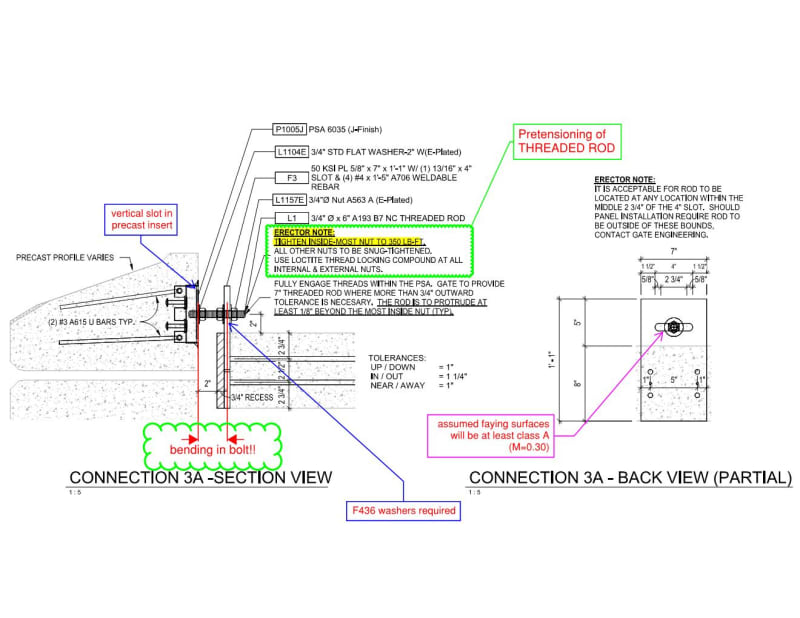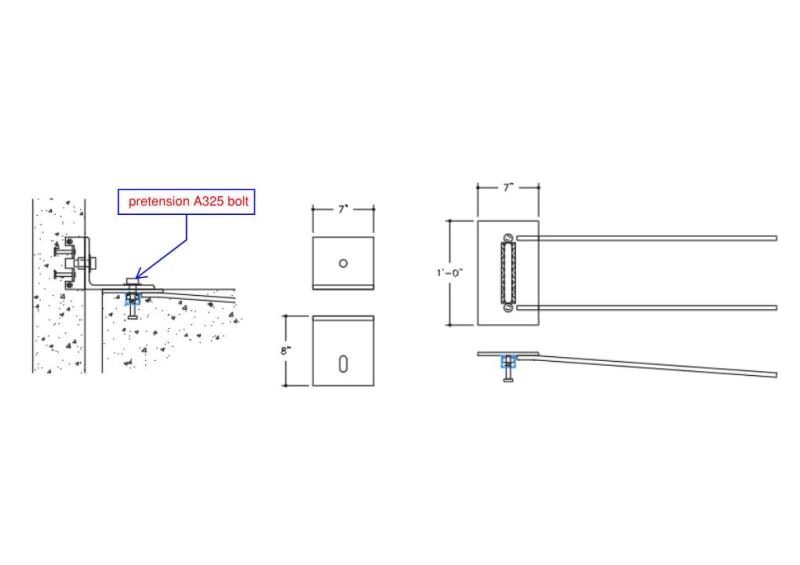bobharsh
Civil/Environmental
- Nov 17, 2010
- 8
Good afternoon - I would like to pick brains about the connection below.
Connection is for a cladding system(non structural precast cladding). The connections original intent is an out of plane connection. The ISSUE now is that this connection is being pretensioned (slip critical) to resist "small" in plane loads (seismic design cat B - resist 5% weight)
Questions
1.) SLIP CRITICAL ON THREADED ASSEMBLY? (assuming faying surfaces are adequate)
- threaded rod is Grade A193 B7 - slip critical design in AISC are A325 and A490 bolts. Has anyone used threaded rods in pretension?
2.) 350 ft-lb on threaded rod?
- Depending on k value of nut - does this look right?
3.) BENDING in threaded rod?
- very little capacity when you add eccentricity to rod - the connection below shows 3"!

Connection is for a cladding system(non structural precast cladding). The connections original intent is an out of plane connection. The ISSUE now is that this connection is being pretensioned (slip critical) to resist "small" in plane loads (seismic design cat B - resist 5% weight)
Questions
1.) SLIP CRITICAL ON THREADED ASSEMBLY? (assuming faying surfaces are adequate)
- threaded rod is Grade A193 B7 - slip critical design in AISC are A325 and A490 bolts. Has anyone used threaded rods in pretension?
2.) 350 ft-lb on threaded rod?
- Depending on k value of nut - does this look right?
3.) BENDING in threaded rod?
- very little capacity when you add eccentricity to rod - the connection below shows 3"!



